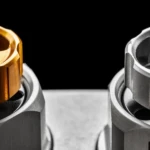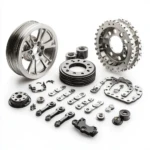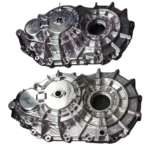The history of CNC machining can be traced back to the 1940s and 1950s, when the first numerical control (NC) machine was developed. These early machines used punch cards or magnetic tape to control the movement of the machine tool, thereby improving the accuracy and efficiency of manufacturing. However, it was not until the 1960s and 1970s that computer numerical control (CNC) machines were widely used, completely transforming the manufacturing industry.
CNC machining uses computer programs to control the machine tool, allowing for highly accurate and repeatable cutting. This enables manufacturers to produce complex parts with tight tolerances, which is crucial in industries such as aerospace, automotive and medical equipment. The development of CNC machining has also led to the creation of new industries such as precision engineering and rapid prototyping.
In the 1980s, the introduction of CNC milling machines and CNC further expanded the functions of CNC machining. These machines allow the production of complex 3D shapes and enable manufacturers to produce parts with complex geometric shapes. The development of CNC grinders and CNC EDM (Electrical Emission Processing) machines also enables them to produce high-precision parts with complex surfaces.
5-axis CNC machining was introduced in the 1990s, which made complex parts with multiple angles and curves. The technology enables manufacturers to produce parts with unprecedented precision and complexity, which has had a significant impact on industries such as aerospace and automotive.
Today, CNC machining has become a global industry, with manufacturers around the world using CNC machines to produce a variety of parts and products. The development of new technologies, such as artificial intelligence and machine learning, is expected to further enhance the capabilities of CNC machining, allowing manufacturers to produce more complex and precise parts.
In addition to technological advancements, the CNC processing industry has become more accessible and affordable. With the rise of cloud-based manufacturing and online machining services, companies of all sizes now have access to CNC machining capabilities without investing in expensive equipment and skilled labor. This has democratized access to precision manufacturing and enabled startups and small businesses that compete with large companies.
Light Light is a professional five-axis CNC machining manufacturer at the forefront of the industry. With advanced five-axis CNC machining equipment and production technology, excellent light can solve complex metal parts manufacturing problems and provide one-stop after-processing and completion services. The company’s expertise and capabilities make it an ideal partner for companies looking to produce high-precision parts with complex geometric shapes.
In short, the history of CNC processing is a story of innovation and technological progress. From the humble beginnings of the 1940s and 1950s to the present day, CNC machining has revolutionized the manufacturing industry and enabled the production of complex and precise parts to be produced. As the industry continues to grow, CNC processing may play an increasingly important role in shaping the future of manufacturing.
FAQ:
Q: What is CNC processing?
A: CNC machining is a manufacturing process that uses computer programs to control the machine tool, allowing highly accurate and repeatable cutting.
Q: What are the benefits of CNC processing?
A: The benefits of CNC machining include improved accuracy, efficiency and productivity, and the ability to produce complex parts with tension tolerance.
Q: Which types of industries use CNC processing?
A: CNC processing is used in a wide range of industries including aerospace, automotive, medical equipment and precision engineering.
Q: What is 5-axis CNC machining?
Answer: 5-axis CNC machining is a CNC machining that can produce complex parts with multiple angles and curves.
Q: How does CNC machining evolve over time?
A: With the advancement of technology and the introduction of new machines and processes (such as 5-axis machining and cloud-based manufacturing), the development of CNC machining has evolved significantly over time.
Q: What is the future of CNC processing?
A: The future of CNC machining is likely to be affected by technological advances such as artificial intelligence and machine learning, which will allow manufacturers to produce more complex and precise parts.















